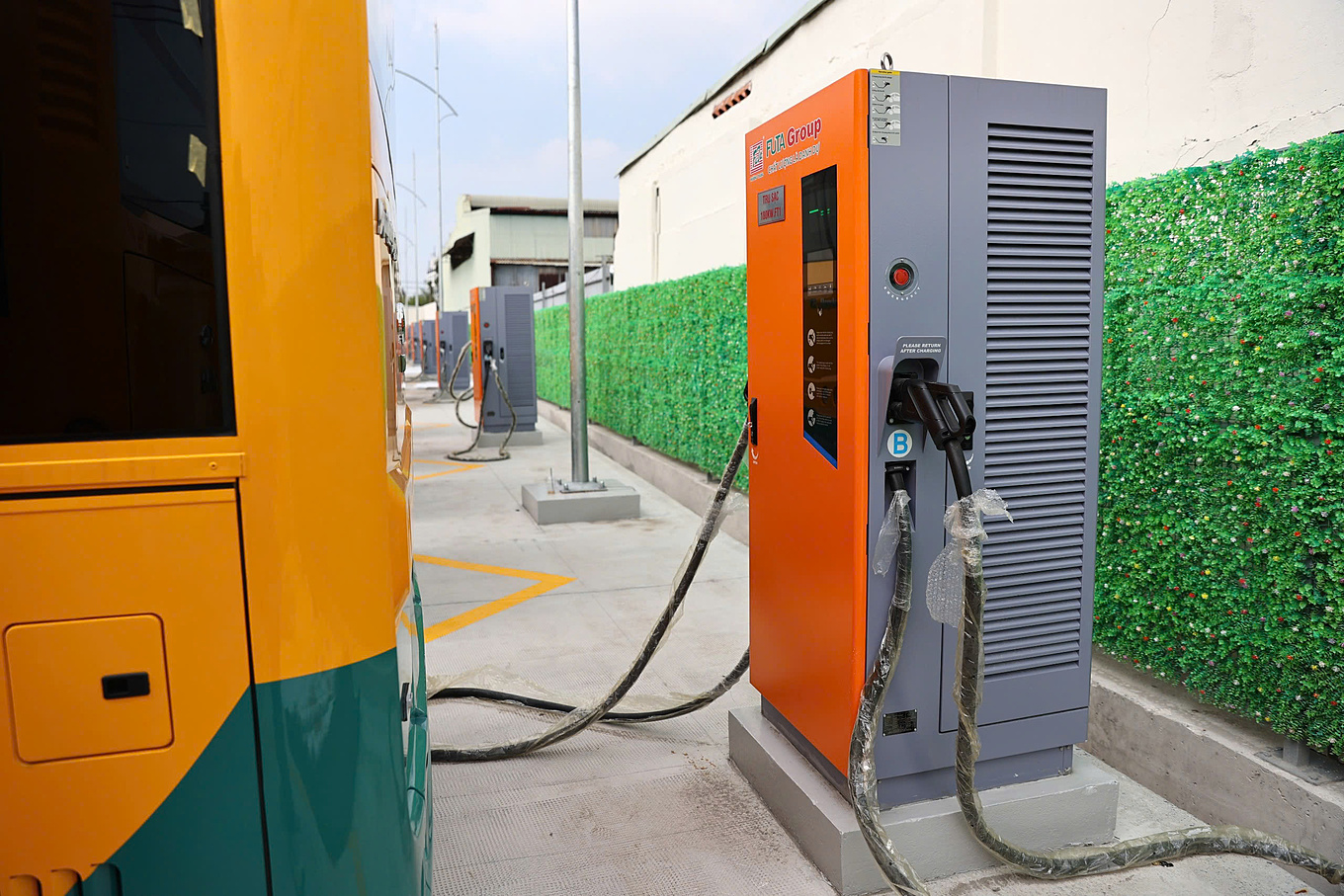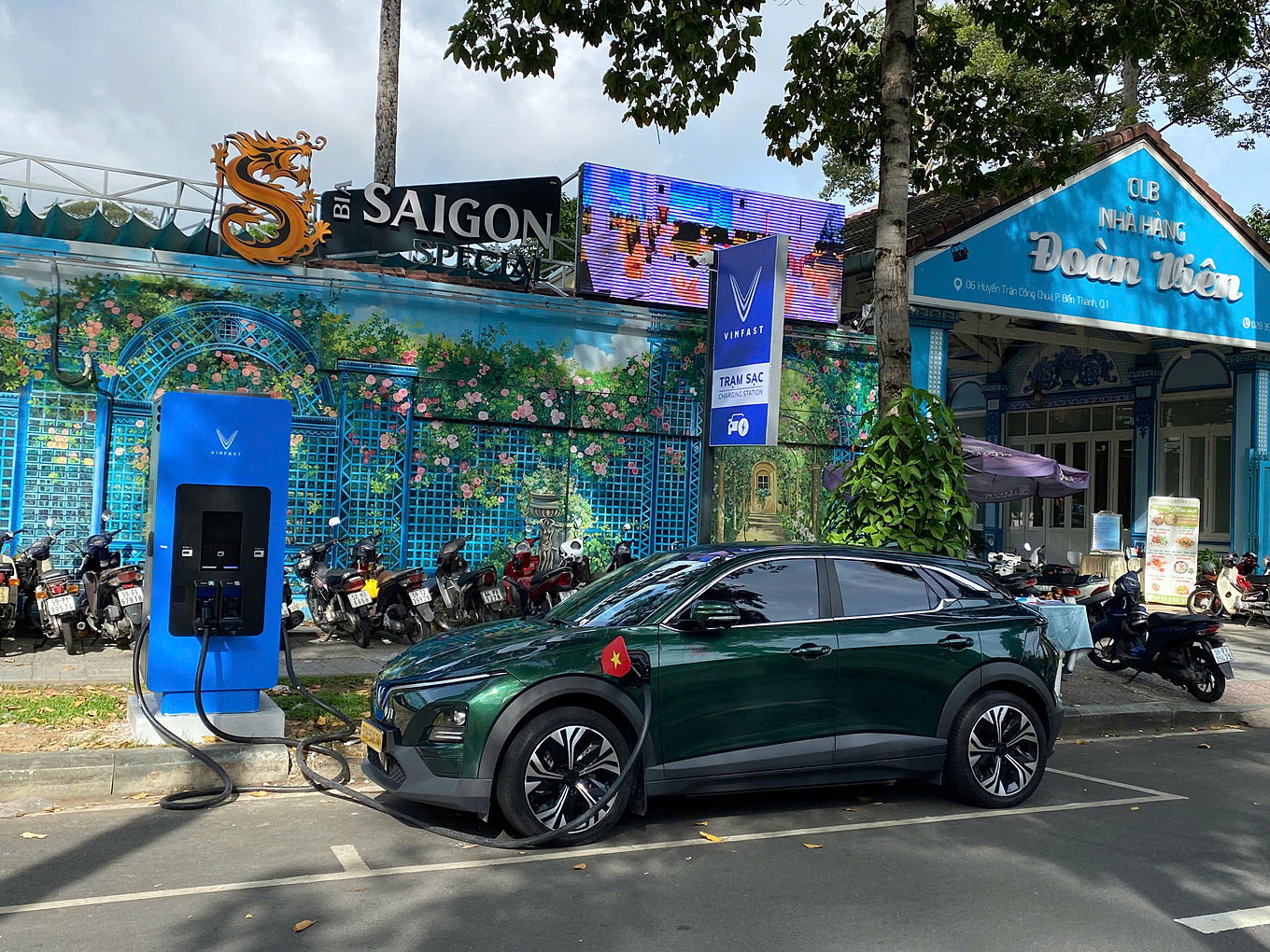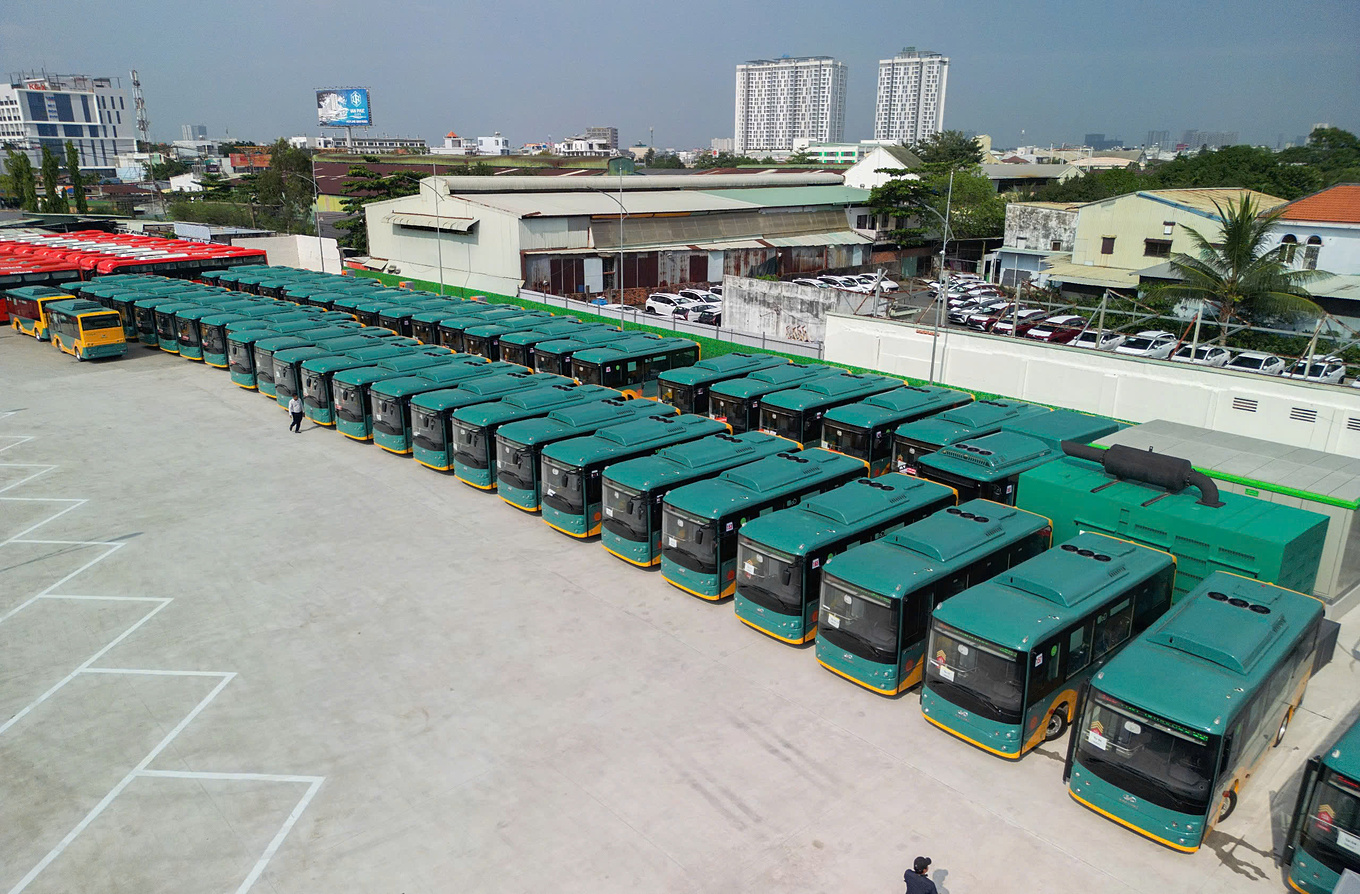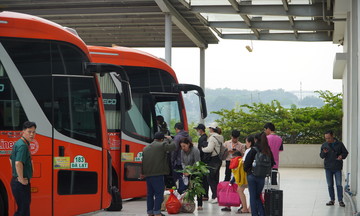Ho Chi Minh City has completed the first phase of its vehicle emissions control plan, outlining a roadmap and support policies for transitioning buses to clean energy. The goal is for all buses in the city to run on electricity or environmentally friendly fuel by 2030.
Over the next 5 years, the city plans to replace over 3,300 diesel or CNG buses with electric models. This includes over 2,200 buses on existing routes and over 1,100 for new routes.
Beyond buses, the Center for Economic Application Consulting (Ho Chi Minh City Institute for Development Studies - HIDS) has drafted a plan to transition over 400,000 gasoline motorcycles to electric ones for ride-hailing and delivery drivers. With the anticipated increase in electric vehicles, the need for charging stations is becoming urgent. However, the current charging infrastructure in Ho Chi Minh City is limited, especially for buses, which require high power, substantial investment, and ample land.
 |
Electric bus charging station system invested by Phuong Trang - Futa Bus Lines in Ho Chi Minh City. Photo: Quynh Tran |
Electric bus charging station system invested by Phuong Trang - Futa Bus Lines in Ho Chi Minh City. Photo: Quynh Tran
Currently, charging systems for electric buses are mainly deployed by two major companies: VinBus and Phuong Trang - Futa Bus Lines. Public charging networks for cars, taxis, and electric motorcycles are mostly privately invested. The city currently has around 600 VinFast electric motorcycle charging points and 50 Selex battery swapping stations.
To expand the infrastructure, the Public Transport Management Center (Ho Chi Minh City Department of Construction) is working with related units to invest in 19 large charging stations for electric buses. These stations will utilize land at existing bus depots and terminals. The stations aim to meet the needs of nearly 700 electric buses on 47 subsidized bus routes, expected to operate simultaneously from 2027. The investment is estimated at 400 billion VND.
These stations will be located from the city center to the suburbs, at major transportation hubs: Saigon Bus Station, Cho Lon, Van Thanh, Binh Thai, and areas like Tan Phu, Hoc Mon, Cu Chi, and Can Gio. Most of these locations are existing bus stations or logistics depots with basic infrastructure, allocating areas from 50 m2 to nearly 800 m2 for charging stations.
"Investing in charging stations will reassure businesses participating in the electric bus network, thereby supporting the transition towards green transportation", a representative of Ho Chi Minh City's Public Transport Management Center said.
 |
V-Green charging station located on Huyen Tran Cong Chua Street, Ho Chi Minh City. Photo: Ha Giang |
V-Green charging station located on Huyen Tran Cong Chua Street, Ho Chi Minh City. Photo: Ha Giang
Along with buses, according to HIDS, the public charging network for personal electric cars, taxis, and motorcycles will be significantly expanded. By 2028, the city expects to have around 3,000 charging and battery swapping points, prioritized at convenient locations such as gas stations, public parking lots, shopping malls, and parks.
The city's Department of Industry and Trade affirms it will collaborate with the electricity sector to ensure a stable power supply for the charging station network. This includes upgrading the power grid in areas at risk of overload and implementing flexible pricing to encourage off-peak charging. The city is also considering integrating solar power for sustainability and cost savings.
Dr. Le Xuan Hong, an electrical engineering expert at Ho Chi Minh City University of Transport, believes the transition to electric buses is not a major challenge, given the city's experience supporting this type of vehicle. However, he emphasizes that charging infrastructure is crucial to the roadmap's success.
"If the infrastructure isn't ready, even with the desire to accelerate, implementation will be impossible", he said, noting the need for a suitable roadmap when expanding the transition policy to other vehicles beyond buses to avoid disrupting people's lives.
 |
Electric bus connecting Ben Thanh - Suoi Tien metro operating in Ho Chi Minh City. Photo: Quynh Tran |
Electric bus connecting Ben Thanh - Suoi Tien metro operating in Ho Chi Minh City. Photo: Quynh Tran
From a business perspective, Tran Nguyen Thai, CEO of Bao Yen Bus Company, says that with electric buses, the long charging time necessitates charging stations near parking lots for efficient operation. He suggests a city-wide network of charging stations, spaced 10-15 km apart, along with financial support and interest rate incentives to encourage business investment.
Dr. Pham Viet Thuan, Director of the Ho Chi Minh City Institute of Environmental and Natural Resources Economics, sees electric vehicles as an inevitable trend in large cities, and Ho Chi Minh City's push for transition is reasonable. Beyond buses and ride-hailing motorcycles, he suggests expanding the transition to government vehicles and investing in corresponding charging infrastructure.
According to Dr. Thuan, the current 19 stations are just the beginning and need to be multiplied in the future. The infrastructure should be technically synchronized, shareable, and easily expandable in the long term, along with incentives to attract businesses, reducing the burden on the budget.
"As electric vehicles become increasingly common, developing charging station infrastructure is not just a technical requirement but a crucial foundation for the city to achieve its green and sustainable transportation goals", Dr. Thuan said.
Giang Anh












